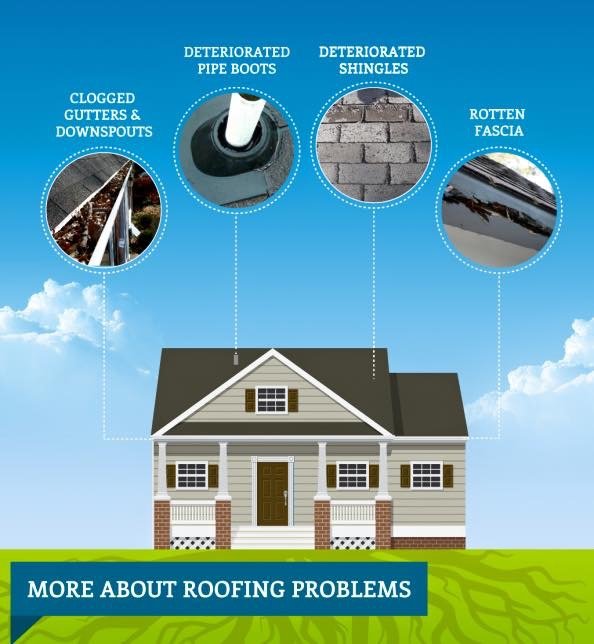Neglecting Roofing Ventilation Can Result In Pricey Repairs; Discover The Vital Considerations That Ensure Efficient Installment And Maintain Your Investment
Neglecting Roofing Ventilation Can Result In Pricey Repairs; Discover The Vital Considerations That Ensure Efficient Installment And Maintain Your Investment
Blog Article
Short Article By-Thorpe Manning
When you're dealing with a roof covering job, you may not believe much regarding roof air flow, yet it's more essential than you understand. Efficient air flow helps control temperature level and wetness in your attic room, stopping troubles like mold and structural damage. By comprehending just how to design and set up a well balanced air flow system, you can enhance power efficiency and extend the life expectancy of your roof products. So, what are the key elements to consider throughout installation that can make all the distinction?
Relevance of Roofing System Ventilation
Roof air flow plays a critical role in preserving the general wellness of your home. By enabling fresh air to circulate with your attic, it helps regulate temperature level and wetness degrees. This balance is necessary to avoid heat buildup throughout hot months, which can bring about raised energy prices as your air conditioning works overtime.
Moreover, appropriate ventilation significantly reduces the risk of moisture-related problems like mold and mildew and mildew. If moisture levels increase, your home's structural integrity can be compromised, leading to pricey repair work. You would not intend to deal with rotting timber or warped roof covering materials, right?
Additionally, sufficient ventilation extends the life expectancy of your roofing system. When warmth and wetness are kept in check, your roof can perform ideally, preventing early wear and tear. This suggests fewer frustrations and expenditures down the line.
How Roof Ventilation Works
Effective roofing system air flow relies on the all-natural motion of air to develop an equilibrium in between intake and exhaust. When you install vents, you're basically enabling fresh air to enter your attic room while allowing hot, stagnant air to escape. This process assists regulate temperature and dampness degrees, protecting against concerns like mold growth and roof damages.
Intake vents, typically found at the eaves, reel in amazing air from outdoors. At the same time, exhaust vents, located near the ridge of the roof covering, allow hot air surge and leave. The difference in temperature creates a natural airflow, known as the pile result. As cozy air surges, it produces a vacuum that pulls in cooler air from the lower vents.
To enhance this system, you need to guarantee that the intake and exhaust vents are appropriately sized and positioned. If the consumption is limited, you won't accomplish the desired air flow.
Likewise, not enough exhaust can trap heat and dampness, causing potential damage.
Key Installation Considerations
When installing roofing system air flow, a number of crucial factors to consider can make or break your system's performance. Initially, you require to examine your roof covering's layout. The pitch, shape, and materials all influence air flow and air flow option. See to https://sethofvlb.csublogs.com/40929796/explore-the-ways-in-which-unpredictable-weather-can-interrupt-your-roof-covering-installation-timeline-and-uncover-vital-strategies-to-ensure-your-job-remains-on-program-regardless-of-the-conditions to pick vents that suit your roof type and local climate conditions.
Next off, consider the placement of your vents. Preferably, you'll want a well balanced system with intake and exhaust vents placed for ideal air movement. Location consumption vents low on the roofing system and exhaust vents near the top to motivate an all-natural flow of air. This configuration helps avoid dampness buildup and advertises power effectiveness.
Don't forget about insulation. Correct insulation in your attic room prevents warmth from getting away and maintains your home comfy. Guarantee that insulation does not block your vents, as this can hinder air movement.
Lastly, consider https://specificationonline.co.uk/articles/2021-06-08/aco-water-management/early-engagement-during-blue-and-green-roof-construction-essential . Choose ventilation systems that are very easy to gain access to for cleansing and examination. Regular upkeep ensures your system continues to work successfully gradually.
Conclusion
To conclude, roof covering air flow is vital for a successful installation. By ensuring appropriate airflow, you can prevent warm build-up and moisture problems that bring about costly damage. When you purposefully placement intake and exhaust vents, you improve energy effectiveness and lengthen the life expectancy of your roofing system. Bear in mind, a well-ventilated roof covering not only protects your investment yet also improves your indoor air top quality. So, prioritize ventilation to ensure a resistant and cost-efficient roof for your home.
